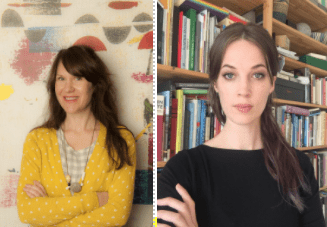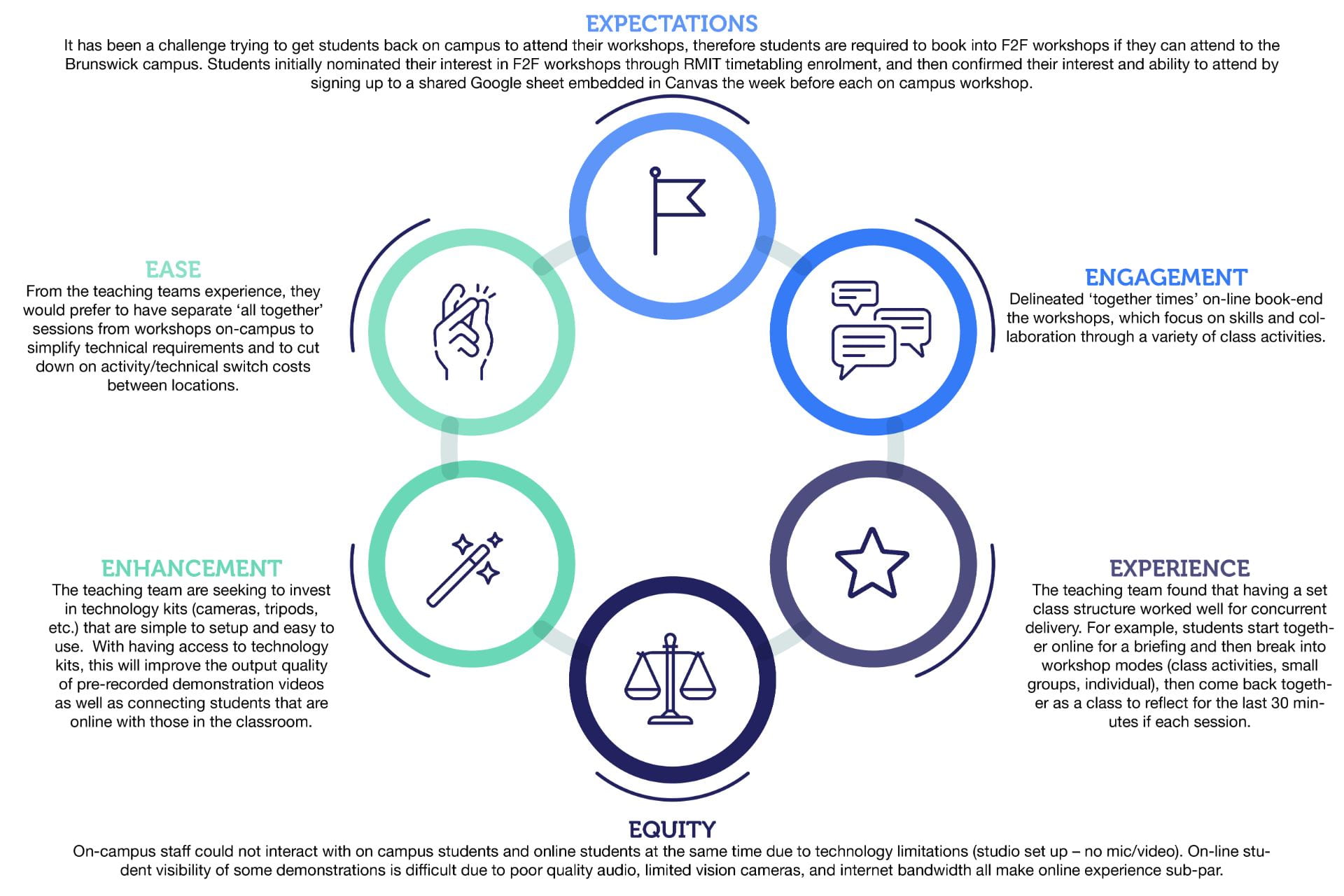
Verity / Tarryn
Coordinators – First Year
Fashion, Textiles, Place and Story is a whole of school fashion and textiles Year 1 core course that develops student’s critical reflection skills through a framework of stories and intent.
School: F&T
Year: 1
Cohort Size: 307
Delivery Mode: Online, F2F optional
High Effort
Implementation level: Very Hard
Overview
Fashion, Textiles, Place and Story has a focus on establishing strong relationships and making connections with people and with place. This includes an indigenous culture connection, which is partly assessed using an embedded micro-credential.
The unit is a foundational course and attracts a large cohort of 300+ students. Last year’s restrictions and this year’s move to concurrent teaching modes have proven a big challenge to the core principles of the course (belonging, diversity and connection with place). This case study explains some of these challenges and how they were overcome.
Approaches Implemented
For this case, you will see the approaches implemented and strategies used have been aligned to the 6E framework developed by the DSC L&T team to support concurrent delivery modes.

Overall, with the core values of Belonging, Inclusion and Diversity at the centre of this course, as you have probably gathered, concurrent teaching has not been a smooth journey in fulfilling these values. In fact, these core values have been far removed from the pedagogical value of location for those students who have only been present online due to their location and travel restrictions; rather, the central value of ‘place’ in the course has been addressed by focusing on students’ making discoveries about their own location, their place in the global industry, and connecting with their community of peers and practice.
Moving forward, the teaching team are continuously trying to create a sense of community and belonging in this course by providing flexible options for all students to select what method works best for them and students learning. Although the structure of this course is quite fluid throughout the semester, providing online accessible resources and workshops that are inclusive, collaborative and diverse is essential to try and encapsulate and portray these core values regardless of geography.
Benefits / Challenges
Students book into F2F workshops
Benefits
- Predictable numbers
- Students can choose their preference for online or F2F.
Challenges
- Booking process is manual and teacher-resource intense.
- Booked students do not always show up.
- Logging class attendance is manual.
- Year 1 students, confused about timetabling and where they must be and when.
- Students abroad in different time zones
Book-ended Workshops
Benefits
- Sets tone for on-line and in-class student interaction.
- Creates level-playing field (equitable experience) for on-line and F2F students.
- Enables a diverse mix of staff and students.
- Guest speakers from all over the world.
Challenges
- Tendency is to use Collaborate Ultra for both on-line discussion and workshop demonstrations when a more mobile solution might be better for the workshop.
- Hard to make the class transitions seamless.
- Difficult for staff and students on campus to engage together with students online.
Workshop roaming? (Tech solution TBD)
Benefits
- Kit is plug and play, suitable for any location, connecting online students with those in the classroom.
- High-quality output
- Easy to setup and use
Challenges
- Timetable issues affected what video/audio equipment was available, hence the wish list for technology kits usable in any location.
- Having to use personal equipment at times.
- Some on-campus environments aren’t equipped for active learning and collaboration.
Student Experience
As a cohort, the students enjoyed having opportunities to co-design their learning experience by building on personal interests and exploring their own perspective and place in a global industry that encompasses many disciplines. They most enjoyed the diverse choices in the workshop series, hearing from different industry guests and lecturers, and trying different ways of working (independent/guided, F2F/online, synchronous/asynchronous, reflective/practical/conceptual).
Advice/ Tips
- Stick with an online delivery for those students who prefer to opt into this mode.
- Provide on campus workshops as a preference for those students who can/want to attend using a booking system.